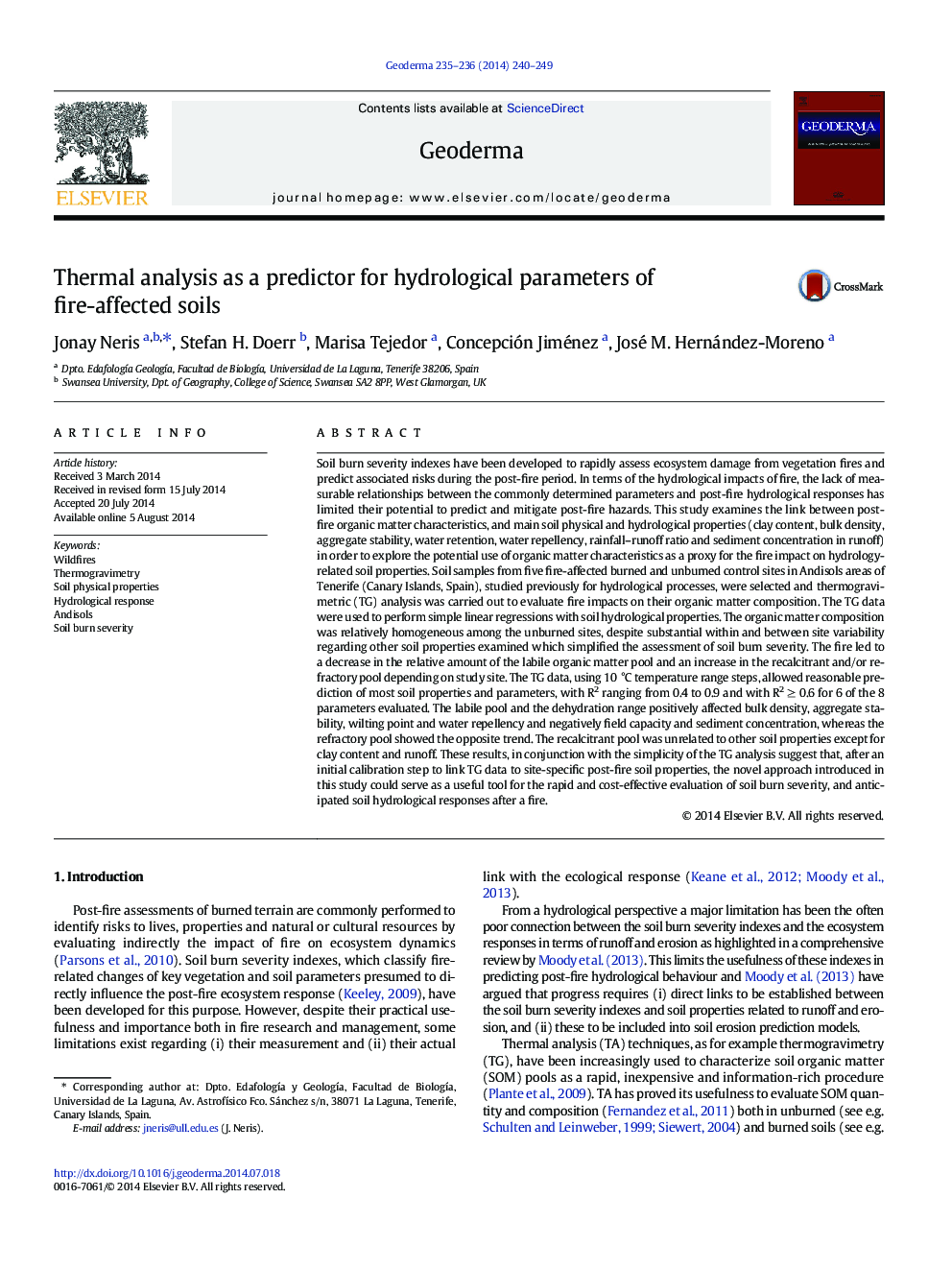| Article ID | Journal | Published Year | Pages | File Type |
|---|---|---|---|---|
| 4573323 | Geoderma | 2014 | 10 Pages |
Abstract
Soil burn severity indexes have been developed to rapidly assess ecosystem damage from vegetation fires and predict associated risks during the post-fire period. In terms of the hydrological impacts of fire, the lack of measurable relationships between the commonly determined parameters and post-fire hydrological responses has limited their potential to predict and mitigate post-fire hazards. This study examines the link between post-fire organic matter characteristics, and main soil physical and hydrological properties (clay content, bulk density, aggregate stability, water retention, water repellency, rainfall-runoff ratio and sediment concentration in runoff) in order to explore the potential use of organic matter characteristics as a proxy for the fire impact on hydrology-related soil properties. Soil samples from five fire-affected burned and unburned control sites in Andisols areas of Tenerife (Canary Islands, Spain), studied previously for hydrological processes, were selected and thermogravimetric (TG) analysis was carried out to evaluate fire impacts on their organic matter composition. The TG data were used to perform simple linear regressions with soil hydrological properties. The organic matter composition was relatively homogeneous among the unburned sites, despite substantial within and between site variability regarding other soil properties examined which simplified the assessment of soil burn severity. The fire led to a decrease in the relative amount of the labile organic matter pool and an increase in the recalcitrant and/or refractory pool depending on study site. The TG data, using 10 °C temperature range steps, allowed reasonable prediction of most soil properties and parameters, with R2 ranging from 0.4 to 0.9 and with R2 â¥Â 0.6 for 6 of the 8 parameters evaluated. The labile pool and the dehydration range positively affected bulk density, aggregate stability, wilting point and water repellency and negatively field capacity and sediment concentration, whereas the refractory pool showed the opposite trend. The recalcitrant pool was unrelated to other soil properties except for clay content and runoff. These results, in conjunction with the simplicity of the TG analysis suggest that, after an initial calibration step to link TG data to site-specific post-fire soil properties, the novel approach introduced in this study could serve as a useful tool for the rapid and cost-effective evaluation of soil burn severity, and anticipated soil hydrological responses after a fire.
Keywords
Related Topics
Physical Sciences and Engineering
Earth and Planetary Sciences
Earth-Surface Processes
Authors
Jonay Neris, Stefan H. Doerr, Marisa Tejedor, Concepción Jiménez, José M. Hernández-Moreno,
